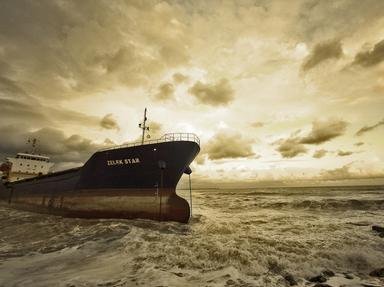Quiz Answer Key and Fun Facts
1. Sunk in 1854, this iron-hulled ship was chartered by the White Star Line and had an unfortunate similarity with that company's most famous vessel, the ill-fated Titanic. What was her name?
2. The loss of this steamer in 1852 had such a profound impact on British Empire that it spawned the notion of "Women and Children First" and was immortalized by Rudyard Kipling. She was the...
3. The fate of this steamer shocked and angered much of New York City, and, until the destruction of the World Trade Center on September 11, 2001, was one of its worst. What was the ship's name?
4. This liner would go down in history as the worst shipwreck to hit the Pacific Northwest. Can you name her?
5. Intended to be flagship of their fleet, this ship built for the Holland-America line would instead became a troopship, and then a casualty of war. What was she called when sunk?
6. This 1923 disaster off the coast of California was one of the most spectacular in US Naval History up to that date. Where did it happen?
7. There have been a few vessels that have been given the dubious honor of being lost two or more times throughout their career (the most famous example being the Confederate submarine Hunley in 1864). Seventy-five years later, another submarine suffered the same fate. She was known as the...
8. The sinking of this freighter in 1952 became major media event worldwide and made her captain a legend. This ship was known as the...
9. The burning of this cruise ship was the catalyst in bringing about the introduction of the SOLAS (Safety of Life at Sea) regulations. Name her.
10. Sunk in 1942, this ship would, decades later, be among one of the most successful deep sea treasure hunts of the 20th century. Name the vessel.
Source: Author
FearlessFreep
This quiz was reviewed by FunTrivia editor
stedman before going online.
Any errors found in FunTrivia content are routinely corrected through our feedback system.
